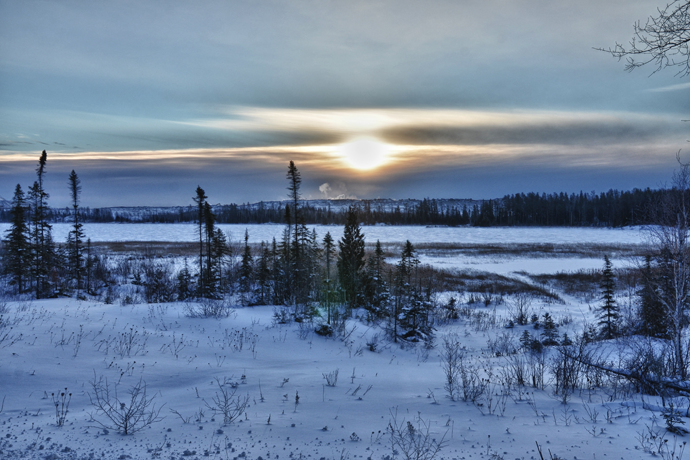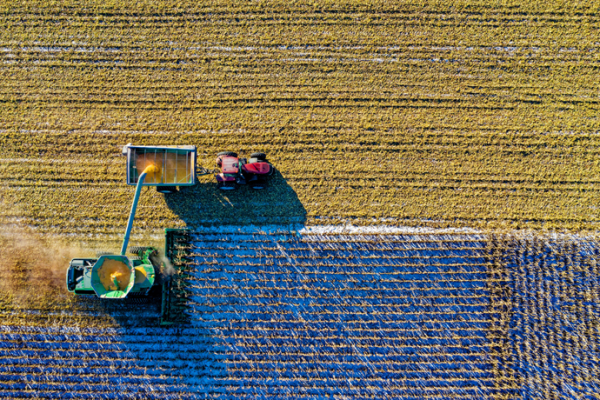By Chris Henderson, Chairman at GLOBE Series. Original article from Ottawa Citizen, published on January 24, 2019
In the Arctic community of Iqaluit, average daily temperatures fall below freezing for eight months of the year. In the depths of winter, it is bitterly cold.
In such harsh environments, energy is vital to survival in Iqaluit, and in some 300 other remote communities across northern Canada largely populated by Indigenous Peoples. Far from provincial and territorial power systems, these off-grid villages and towns rely on diesel fuel for power and heat.
Such an energy reality has significant economic consequences. Diesel power is costly. Petroleum must be transported by ice roads and marine tankers over vast distances. For some communities, air freight is the only feasible way to get fuel to residents.
The social and environmental impacts of diesel-based energy are also debilitating. Reliance on diesel perpetuates an import economy; bleeding scarce funds from community coffers instead of utilizing local energy resources. Fuel spills are common. Diesel generation pollutes the air and emits greenhouse gases that contribute climate change.
“For some communities, air freight is the only feasible way to get fuel to residents.”
For decades, off-grid First Nations, Métis and Inuit communities have sought alternatives to diesel-based energy. The Inuit community of Inukjuak in northern Quebec, for example, has been diligently developing a small hydro project to replace diesel fuel used for power and heating.
There is good news on the horizon. Through the foresight of Indigenous leaders and increasing receptivity on the part of utilities and governments, Canada is on the cusp of a northern energy revolution. New investment is being committed to cleaner energy technologies in remote communities countrywide, anchored to three key pillars.
The first is to adopt an integrated approach by building energy-efficient homes and optimizing the potential of local renewable wind, solar, hydro and bioenergy resources. Gull Bay First Nation located north of Thunder Bay has embraced such an approach. The community will bring Canada’s first remote renewable energy micro grid online this spring and is also implementing an energy efficiency program.
Second, it is essential that Indigenous Peoples play a central leadership role in developing clean energy to meet their needs. Proactive community planning and engagement is proving to be much more effective than top-down directives of the past. In an era of reconciliation, it is also the right thing to do. The Vuntut Gwitchin government of Old Crow, Yukon will break ground on a solar power array with partners this coming summer to replace diesel fuel now being delivered by airplane.
Third, forging partnerships between Indigenous organizations, utilities and developers is of critical importance; drawing on the know-how of clean energy companies and the local knowledge of First Nations, Métis and Inuit peoples. The pioneering efforts of Watay Partnership in northern Ontario, comprised of 22 First Nations and a private energy company, is bringing power to communities like Pikangikum with new electricity transmission infrastructure. In Nain, on the east coast of Labrador, the Inuit Nunatsiavut government along with Newfoundland and Labrador Hydro is planning to erect wind turbines to reduce diesel reliance.
The large electricity transmission and supply systems in southern Canada were built with long-term investment provided or backed by governments. So, too, must this be the case for our country’s North. The federal government has stepped up its support, allocating over $700 million to off-grid energy projects. Those resources, coupled with provincial and territorial contributions, are leveraging new investment from private sector partners, fuelling clean energy based economic development across Canada’s hinterland.
Yet, there are key pieces missing from this story. There is a pressing need for supportive public policies and revitalized energy market regulations across the country. Provincial and territorial governments must introduce independent power procurement policies to facilitate 21st-century clean energy infrastructure in remote communities. Energy rate-setting agencies should work together to establish a fair price for reducing diesel reliance through energy efficiency and renewable energy; a price that provides full value for diesel reduction including economic, social and environmental factors. Finally, there are compelling reasons for provincial and territorial governments and utilities to make a commitment to First Nations, Métis and Inuit leadership of clean energy assets, including local ownership.
The potential of Indigenous clean energy for remote communities across Canada embodies words of our national anthem, “True North, Strong and Free.” That’s a future most Canadians could support.
GLOBE Capital returns to Toronto on February 27-28, 2019.
Join us at GLOBE Capital 2019 (February 27-28, Toronto) where we will be discussing emerging sustainable investment opportunities in Canada’s North, including renewable-replacing-diesel energy systems, in our session The Northern Vortex – Unfreezing Sustainable Investment Opportunities in Canada’s North.




